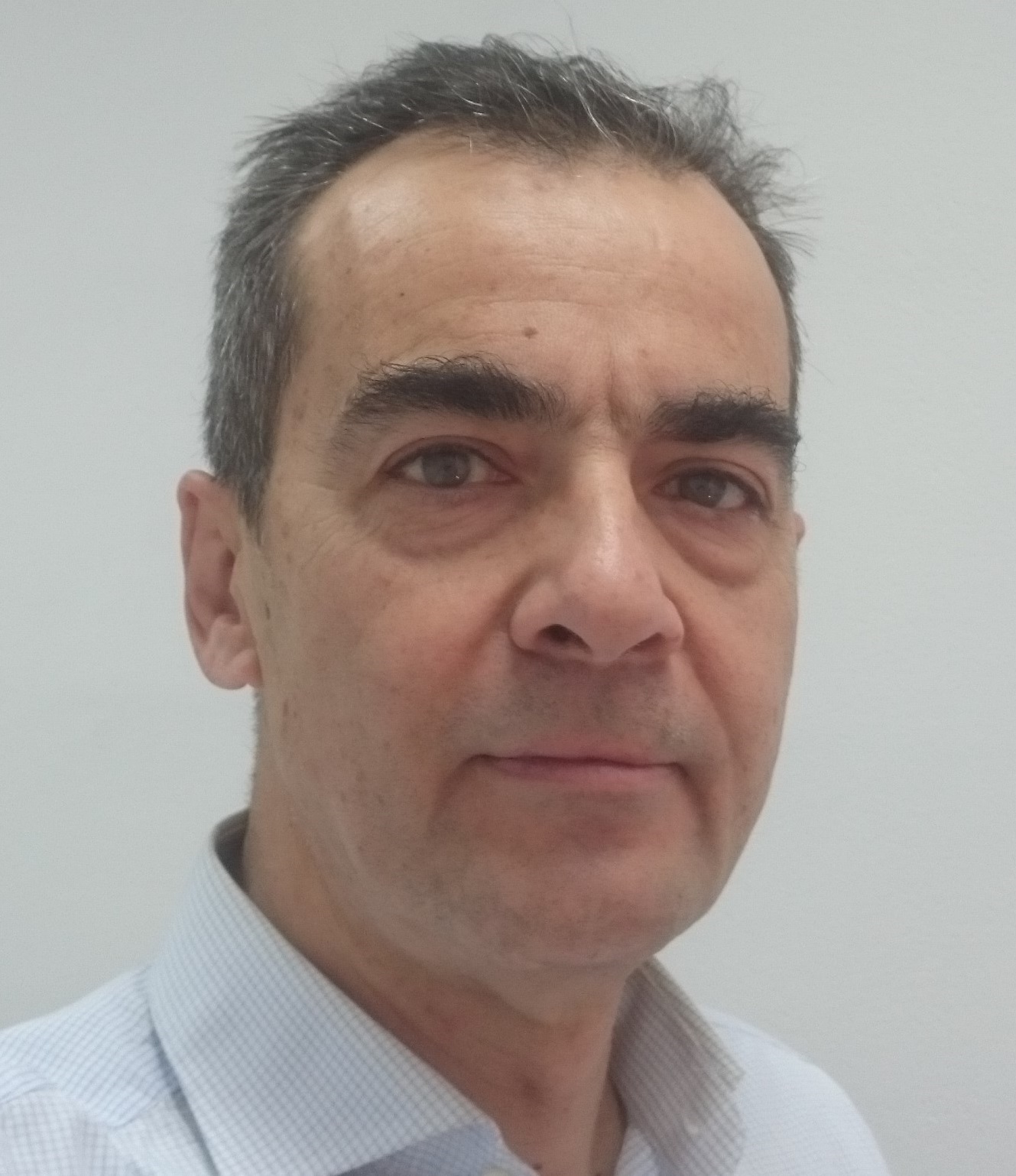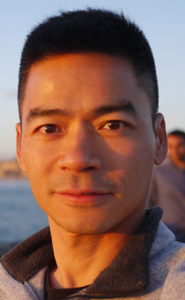Registration for short courses has begun. Register here.
Short courses (Sunday, 30 August 2020)
SHORT COURSE #5: Introduction to COMSOL Multiphysics® and Porous Media Flow Modeling
Invited short courses (Friday, 4 September 2020)
Two full-day courses will be given on Friday, 4 September 2020, by two of the most eminent scientists in the area of the porous media research
INVITED SHORT COURSE #A: Multiphase Flow in Permeable Media: A Pore-Scale Perspective
INVITED SHORT COURSE #B: Capillarity in porous media at different scales
INVITED SHORT COURSE #A Register here
Multiphase Flow in Permeable Media: A Pore-Scale Perspective
Instructor:
|
Martin Blunt |
Event Date: Friday, 4 September 2020
Duration: Full-day
Location: China University of Petroleum (UPC)
Registration Fee: €95 (For InterPore2020 Participants) / €150 (Short-course only)
Description:
This course will provide an overview of pore-scale imaging, analysis and modelling with an emphasis on how the fundamentals inform practical application. The course will allow scientists and engineers to make the best use of the latest developments in imaging and modelling, and to apply the results intelligently to predict and interpret field-scale recovery, storage and transport processes.
The course will start with a review of the basic physical laws governing flow and transport at the small scale. Then the latest developments in imaging and modelling technology will be reviewed. The emphasis will then be on multiphase flow properties – capillary pressure and relative permeability. Attendees will understand how to use these quantities for the design and interpretation of field-scale processes.
The course will not only introduce so-called digital rock physics, but will educate participants in the deeper and richer appreciation of multiphase flow properties and their impact at the macroscale enabled by new imaging and modelling technology.
Course Topics:
TBD
INVITED SHORT COURSE #B Register here
Capillarity in Porous Media at Different Scales
Instructor:
|
S. Majid Hassanizadeh |
Event Date: Friday, 4 September 2020
Duration: Full-day
Location: China University of Petroleum (UPC)
Registration Fee: €95 (For InterPore2020 Participants) / €150 (Short-course only)
Description:
In this short course, a systematic approach is taken to the understanding of capillarity in porous media at different scales. Current definitions of capillary pressure, which are mostly empirical in nature are revisited and it is shown that they are special cases of a more general theory of capillarity.
First, surface tension and its molecular basis and wettability concepts are introduced. Next, capillary pressure is defined at pore scale based on the equation of momentum conservation for a fluid-fluid interface. It is shown that, even at microscale, capillary pressure is equal to the difference in pressures of the two fluids only under static conditions. General equations for dynamic or non- equilibrium conditions are derived. Then, capillary pressure at the macroscale (Darcy scale) is introduced based on principles of thermodynamics, and its relationship to fluid pressures under static and dynamic conditions is explored. Non-equilibrium capillarity theory and its effects on the modelling of moisture transport and two-phase flow processes are discussed. Computational and experimental studies are presented that investigate new generalized equations in variety of systems.
Course Topics:
- Capillarity at pore scale (3 hours)
- Capillarity at macroscale; fundamentals (2 hours)
- Capillarity at macroscale; computational and experimental studies (2 hours)
SHORT COURSE #1 Register here
Nano and Micro-Particle Interaction with, and Transport through, Saturated Granular Media, using Free Multiscale MATLab Software by and for Academics (Parti-Suite)
Instructors:
|
|
Event Date: Sunday, 30 August 2020
Duration: Half-day (8:30-12:00)
Location: China University of Petroleum (UPC)
Registration Fee: €15 (For InterPore2020 Participants) / €100 (Short-course only)
Description:
Interaction of nano- and micro-particles with surfaces, and its impact on particle transport in porous media is a subject spanning Environmental Engineering to Pharmaceutics. This short course trains attendees on free software made newly available for this purpose (Parti-Suite) (https://wpjohnsongroup.utah.edu Trajectory Software). Nanoscale interactions between like-charged particles and surfaces (e.g., both negative) interacting across water or other aqueous fluids occur over different decay lengths, thereby producing interaction profiles with a repulsive barrier to attachment. Barrier heights agree quantitatively with experimentally-observed particle retention only when nanoscale attractive zones (surface heterogeneities) are included in mechanistic force/torque simulations.
Pore scale transport simulated via repeated particle translation and solution of velocities from force/torque balance, builds particle trajectories that may attach (immobilize) on the surface or that may remain associated with the surface without immobilization, depending on whether nanoscale attractive zones are large enough to immobilize the particle under the given conditions (e.g., particle size, surface properties, solution properties, fluid velocity). Macroscale particle distributions down-gradient from sources are predicted via compounded particle loss to successive layers of grains, and show concentrations that decrease exponentially with distance from source only when a repulsive barrier is absent, in agreement with experimental observations. When a repulsive barrier exists, particle distributions from source are non-exponential, as shown by many experiments, which confounds prediction of transport distances. However, non-exponential distributions emerge from simulations depending on choices made regarding the outcomes for colloids that are undefined beyond the pore (grain) scale, highlighting the need to parameterize these outcomes.
Participants should bring their own laptops.
Course Topics:
- Nanoscale Interactions (2.5 hours)
- Pore scale transport (2.5 hours)
- Continuum scale distribution (2.5 hours)
SHORT COURSE #2 Register here
Microfluidics: Experimental approaches in multi-phase flow and transport processes in porous media
Instructors:
|
|
Event Date: Sunday, 30 August 2020
Duration: Half-day (13:00-16:30)
Location: China University of Petroleum (UPC)
Registration Fee: €60 (For InterPore2020 Participants) / €150 (Short-course only)
Description:
In this course we will cover some experimental approaches related to microfluidics, in combination with some fundamental research applications. We will discuss about artificial porous media (like designs, materials and fabrication methods) and their use in microfluidic studies of multi-phase flow and transport. We will refer to the available visualization techniques based on visible light, like optical, fluorescence, and confocal microscopy, as well as micro-CT and thermal imaging for the non-visible light spectrum. Some experimental works related to two-phase flow and transport and electro-kinetic effects, which make use of the pre-mentioned principles of imaging and manufacturing of an artificial porous medium will be presented, emphasizing on the significance of the results in terms of fundamental research. Examples will be given related to the synergy of various experimental and numerical approaches which intend to describe physical processes, and how they were used in the validation of concepts and theories.
Course Topics:
- Artificial porous media: Fabrication methods, advantages and challenges (60 minutes)
- Microscopy techniques (Optical, Fluorescence, Confocal, X-ray micro-Computed Tomography, Thermal) (60 minutes)
- Real time visualization experiments; Pore scale information (40 minutes)
- Examples of the synergy between experimental and numerical approaches (20 minutes)
SHORT COURSE #3 Register here
Flow rate dependency and energy efficiency of steady-state two-phase flow in porous media
Instructors:
|
Marios Valavanides |
Event Date: Sunday, 30 August 2020
Duration: Half-day (8:30-12:00)
Location: China University of Petroleum (UPC)
Registration Fee: €60 (For InterPore2020 Participants) / €150 (Short-course only)
Description:
The scope of this short course is to present the basic principles and analytical tools in order to familiarize the audience with: (a) evaluating the flow rate dependency of relative permeabilities; (b) examining energy efficiency aspects of steady-state two-phase flows in porous media; (c) implementing the new approach to practical applications.
The course will deploy on the following abstracts:
Analysis
Introduction - Saturation dependency vs flow rate dependency; compatibility to the pore-to-core phenomenology of immiscible steady-state two-phase flow in p.m. Reappraisal of the process independent variables: capillary number and flowrate ratio.
From saturation dependency to flow rate dependency - Transformation of conventional relative permeability data diagrams into diagrams describing the flow rate dependency of relative permeabilities. Implementation of the equivalence between the flow rate ratio and the mobility ratio.
Energy efficiency analysis of the process – Definition of energy efficiency (reduced ratio of NWP flow rate per unit power externally provided to maintain the process at steady-state). Definition of the critical flow conditions (CFC), whereby energy efficiency attains maximum values. Construction of the compound, relative permeability and energy efficiency diagrams. Reveal latent CFC in conventional relative permeability diagrams.
Universal, relative permeability and energy efficiency map –construction of the map explicitly describing the flow rate dependency of the process and the basic properties of the NWP/WP/PM system.
Implementation
Universal, flow dependent relative permeability scaling – Methodology for revealing the universal scaling function describing the transition from capillary- to capillary/viscous-- to viscous flow regimes. Recovery of saturation dependency at extreme flow conditions. Case studies: reveal of scaling function from DeProF model simulations, an extensive SCAL study, microfluidic experiments.
Quality assessment of steady-state relative permeability (R/SCAL) measurements – Listing of conditions that must be met when steady-state is reached. Delivery of check-point list for assessing the quality of SS rel-perm data measurements and eventually identifying problematic data points. How does any R/SCAL diagram contain the essential information about a NWP/WP/PM system? Examination of representative examples of RCAL diagrams.
Interstitial flow structure and disconnectedness of NWP (“R/SCAL forensics”) – Methodology for assessing /evaluating the viscous/capillary character of the flow and/or its interstitial structure as to the degree of NWP disconnectedness (ganglia, emulsification, wettability etc). The methodology is based on the characteristic features of the universal energy efficiency and relative permeability map.
Design improved protocols for R/SCAL measurements – How critical are critical flow conditions (CFC) vis-a-vis the characterization of a pore network structure? What are the problems at the very low end of the capillary number regime?
Q&A session - The course will conclude with Q&A and discussion on follow-up actions to explore.
Participants should bring their own laptops.
Course material:
A list of suggested reference papers to read in advance will be provided to the audience. Case study material will be delivered to help familiarization with the course material.
Course Topics:
- Introduction - Saturation dependency vs flow rate dependency (20 minutes)
- From saturation dependency to flow rate dependency (20 minutes)
- Energy efficiency analysis of the process (20 minutes)
- Universal, relative permeability and energy efficiency map (20 minutes)
- Universal, flow dependent relative permeability scaling (20 minutes)
- Quality assessment of steady-state relative permeability (R/SCAL) measurements, interstitial flow structure and disconnectedness of NWP (“R/SCAL forensics”) (20 minutes)
- Design improved protocols for R/SCAL measurements (20 minutes)
- Q&A session (20 minutes)
SHORT COURSE #4 Register here
State-of-the-art image data processing, exploration and analysis features within an intuitive workflow and easy-to-use graphical interface allowing cutting-edge exploration of porous media.
Instructors:
|
Eric Ho |
Event Date: Sunday, 30 August 2020
Duration: Half-day (13:00-16:30)
Location: China University of Petroleum (UPC)
Registration Fee: €15 (For InterPore2020 Participants) / €100 (Short-course only)
Description:
Thermo Fisher Scientific supplies innovative solutions allowing you to be at the cutting-edge exploration of porous media. Whatever the data modality you use, we solve your complex visualization, characterization, analysis and simulation porous media challenges with Thermo Scientific™ Avizo™ Software for materials characterization and PerGeos™ Software for Digital Rock Analysis.
Thermo Scientific software solutions bring answers to your questions from an automatable, customizable, scalable and flexible desktop environment.
Participants can bring their laptop to use the software in real-time during the short course.
Course Topics:
- Advanced 3D Visualization, Image Processing and Segmentation (including Deep Learning) of CT / FIB-SEM images (45 mins)
- Analysis of 2D and 3D digital rock imagery to improve evaluation of reservoir by better understanding the porosity microstructure. Accurately calculate porosity / permeability and perform image-based simulations, including 2 phase flow (45 mins)
- Brief introduction of Digital Volume Correlation. Demonstrate how to use DVC to understand the displacement and strain between 2 samples with one under normal condition and the other one under stress. (30 mins)
- Comparison of fiber orientation analysis methods in composite materials (30 mins)
- Extract key quantitative parameters for batteries and energy materials at the micro- and macro- scales for property understanding and performance improvement. (30 mins)
SHORT COURSE #5 Register here
Introduction to COMSOL Multiphysics® and Porous Media Flow Modeling
Instructors:
|
Ed Gonzalez |
Event Date: Sunday, 30 August 2020
Duration: Half-day (13:00-16:30)
Location: China University of Petroleum (UPC)
Registration Fee: Free (For InterPore2020 Participants) / €100 (Short-course only)
Description:
This course is for those who are just starting out with COMSOL Multiphysics® or want a refresher on the graphical user interface (GUI) and modeling workflow. During the first session, the fundamentals of using the COMSOL® software will be demonstrated. The second part of the course will be devoted to explore how to model mass, momentum, and energy transport in fully and partially saturated porous media with COMSOL Multiphysics®.
We will also cover coupled systems, including linked free and porous flows, poroelasticity, and more.
More information about COMSOL Porous Media Module is available here.
All participants of the short course will receive a full demo license of COMSOL Multiphysics.








